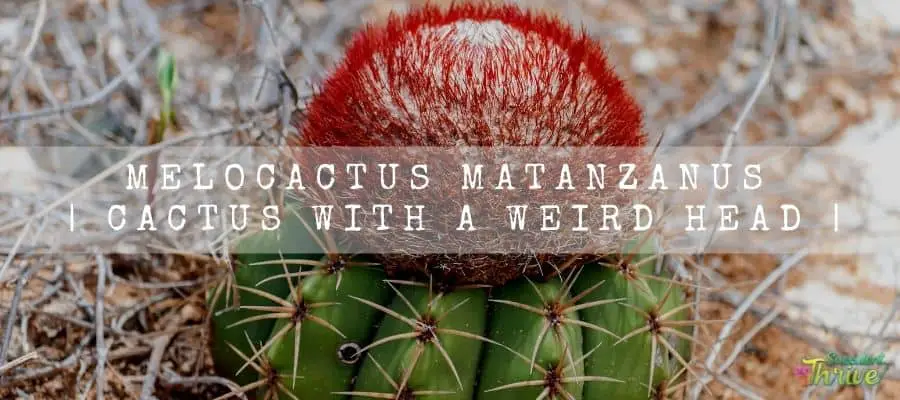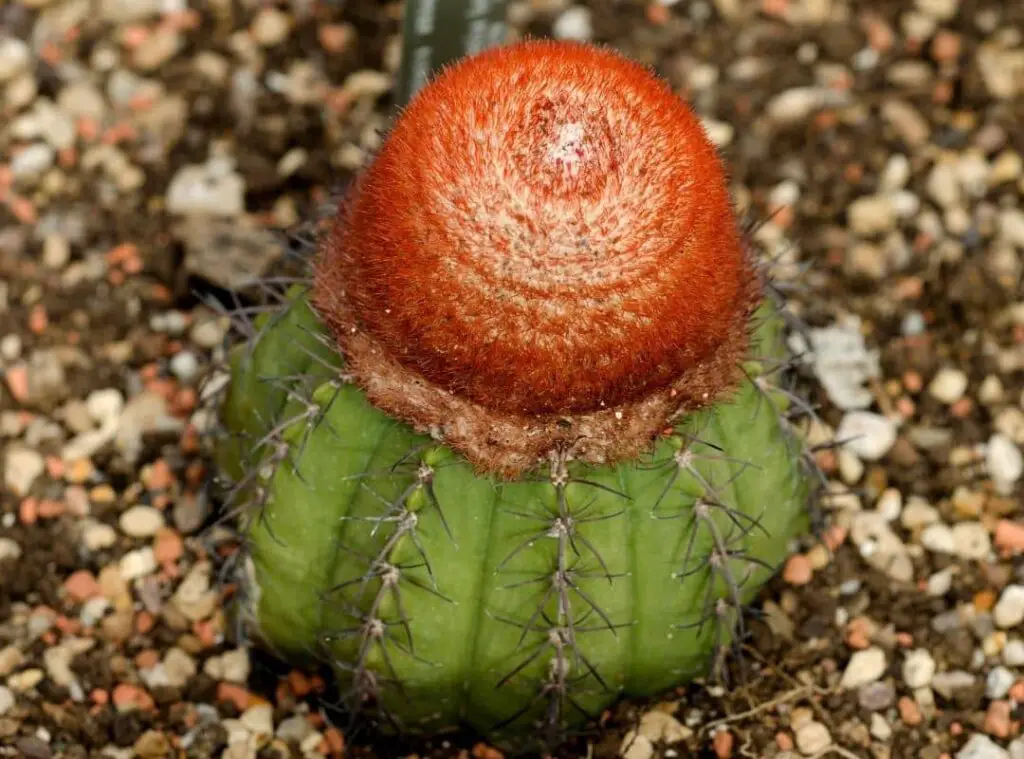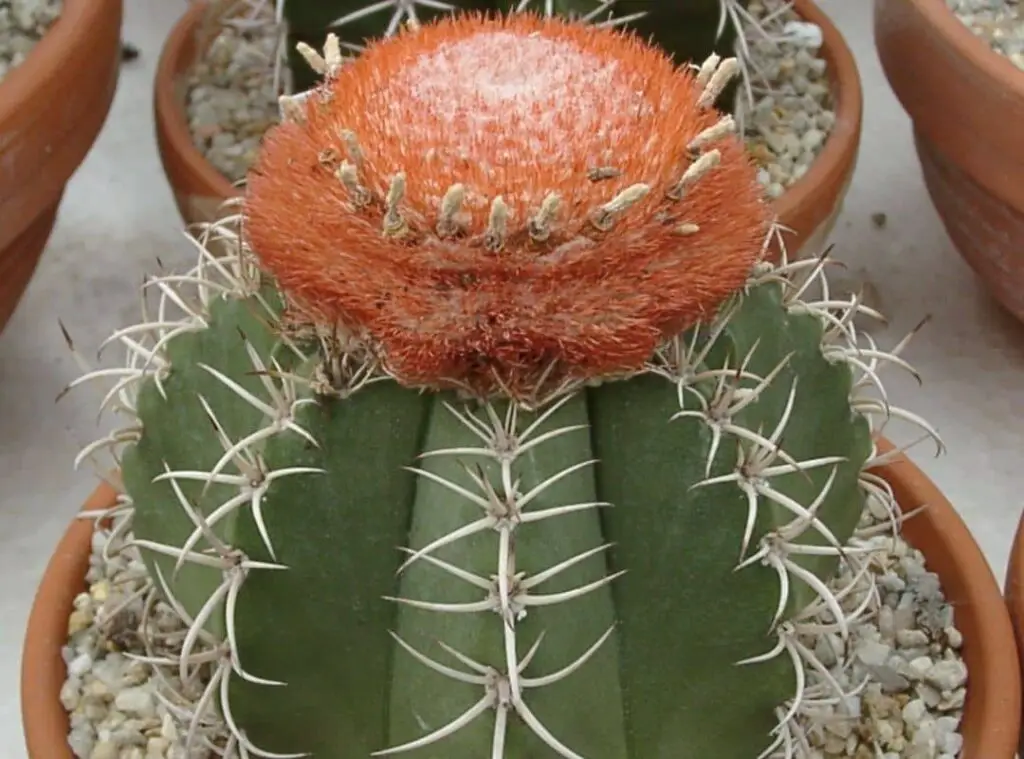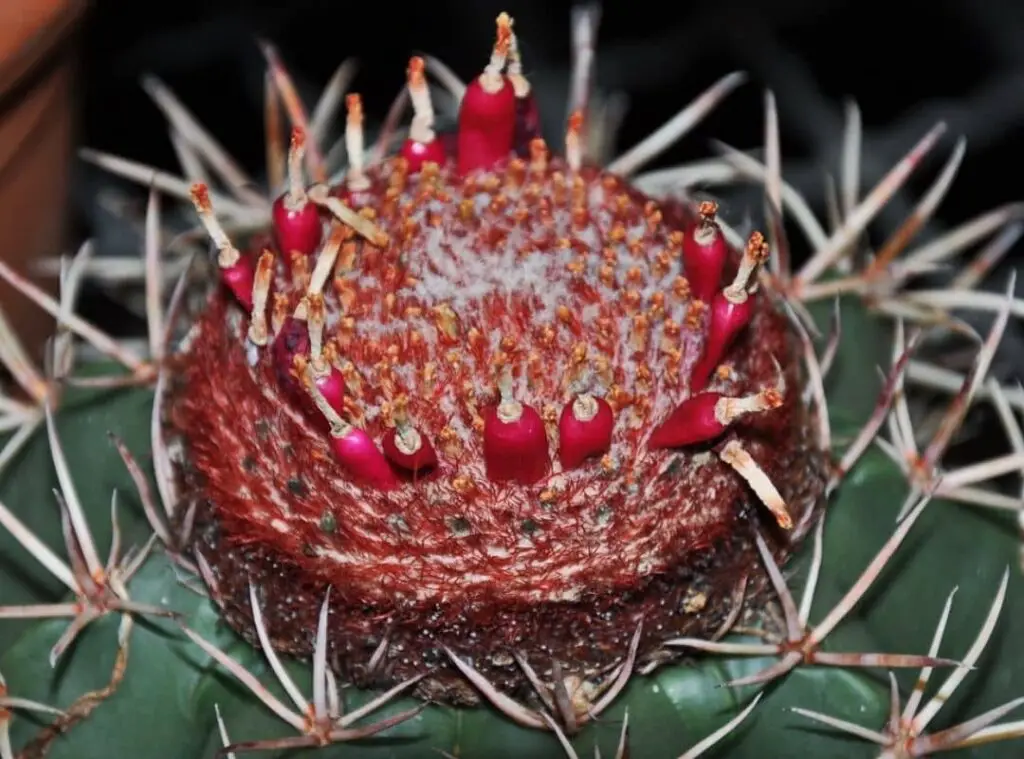Melocactus matanzanus cactus is native plants to Cuba and coastal scrublands among low vegetation would be their natural habitats.
They are an endangered species on a massive scale. The degradation of their habitat is the root cause for this.
Melocactus matanzanus cactus is commonly called the dwarf Turk’s cap. This is one of the most famous and smallest cactus species around the world .
They are quite famous for their globose shape. They belong to the family cactaceae, and you can commonly find those species around the world.
So, I am going to touch on how to grow the Melocactus matanzanus cactus properly, the modes of propagating them and the common bugs and illnesses they may encounter.
Their low maintenance makes them perfect choices for beginners in succulents and cactus gardening.

How do I identify Melocactus matanzanus?
It is a small species. They produce the cephalium right on top of their structure.
They can flower when they are quite young. Melocactus matanzanus cactus stem would be either spherical or slightly depressed.
Moreover, it would be pale green in color and about 8-9 cm in height. Thickness wise, they would be about 8-9 cm. They would consist of 8-8 acute ribs.
Melocactus matanzanus cactus cephalium would tend to look like a cap and it would be either globose or cylindrical.
This characteristic was given the name Turk's cap. The cephalium of the Melocactus matanzanus cactus would be 4-6 cm in diameter and 5-9 cm in height.
Further they will be covered by tightly packed areolas as well. Those areolas would bear wool and orange-red bristles. The Melocactus matanzanus cactus areoles would form 8 mm apart.
They would further consist of about (5-)7-8(-9) radial spines. They would be 2 cm in length.
They will carry one ascending central spine which usually forms in a curved manner. Melocactus matanzanus cactus bloom with rose pink to carmine flowers.
They would be 2cm in length and have a close resemblance to the flowers of Mammillaria. You could spot them flowering during mid-summer.
They would stay in bloom for a few hours around lunchtime.
They would start to flower when they are at least 4 or 5 years old. Melocactus matanzanus cactus produces a fruit which is a clavate berry. They would be 1-2 cm long and pink to lilac pink in color.
You could spot the cephalium carrying the ripened fruits. Those fruits contain seeds which are about 1mm in size.

Growth rate
They are fast growing cactus species if they get the best growing conditions.
One look care guide
| Botanical Name | Melocactus matanzanus |
| Common Name | Dwarf Turk’s cap |
| Plant Type | Cactus |
| Mature Size | 3.6 inches ( 9 cm ) in height and in width |
| Sun Exposure | Full Sunlight to partial light |
| Soil Type | Well draining, sandy |
| Soil pH | Acid, netraeul |
| Bloom Time | Mid summer |
| Flower Color | rose pink |
| Hardiness Zones | 10a-11b. |
| Native Area | Cuba |
| Toxicity | Non toxic |
| Average price | 17 USD |
How do you take care of Melocactus matanzanus?
Light Requirement
Bright sunlight and filtered sunlight would work well with the Melocactus matanzanus cactus.
When you expose them to adequate sunlight, it would turn them into bronze. Further, it would encourage flowering too.
Besides, it would help to develop vigorous spine production. Failing to provide sufficient sunlight would not help them to produce flowers.
Temperature and humidity
They are not tolerant of cold. Hence it is vital that you do not expose them to temperatures below 8-12 degrees Celsius at any given time.
If you expose them to much colder weather conditions, it will result in major damages for the plants or chances are that it may even result in deaths of the plants.
It is important that you keep them exposed to warmer temperatures for a healthy growth.
Is it cold hardy?
They are cold hardy up to 0 degrees Celsius ( 32 degrees Fahrenheit).
USDA Hardiness Zone
The preferred USDA hardiness zones of the Melocactus matanzanus cactus are 10a-11b.
Watering Requirement
They prefer to have moderate watering during April to October. Never leave them bone dry during this time.
On the other hand, excess water will result in rot as they have sensitive roots which are prone for rot.
Literally they will not suck water effectively from wet soil. Moreover, ensure that you allow the soil to become dry between two watering sessions.

Soil Requirement Type / pH.
I suggest you use a porous standard succulent or cactus soil mix for these plants so that Melocactus matanzanus cactus can grow well.
They would require a soil mix which has excellent drainage. Additionally, ensure that it has a good aeration as well.
Pot size Potting and Repotting.
You need to use pots which have good drainage to grow the Melocactus matanzanus cactus.
They would prefer to be repotted once every other year. You need to repot them less often as it would take a longer time for them to establish in the pot.
Where to Plant
Ensure that you grow them in a spot where the plants can aborb sufficient sunlight levels.
That is the prime requirement of these plants. Additionally, if you grow them as potted plants, you need to choose pots which have good drainage.
Fertilizer and time of year
You may feed the Melocactus matanzanus cactus with a cactus fertilizer during their active growing phase.
Flower
Melocactus matanzanus cactus produce flowers in rose pink during mid-summer.

Dormancy
Toxicity
Melocactus matanzanus cactus are nontoxic plants.
Common bugs and illnesses
Melocactus matanzanus cactus are prone to pests’ attacks. The commonly spotted pests would be red spiders, mealy bugs, scales.
Besides, rot is another issue which they may come across. The root causes for these conditions would be the lapses in the care treatment you give for them.
How to propagate Melocactus matanzanus
You can use the seed propagation method to propagate the Melocactus matanzanus cactus.
You can simply sow them in a sandy porous soil mix . Ideally you need to conduct this during February – March.
Ensure that you cover the germination tray with glass so that it would avoid the seeds drying out. The ideal temperature for this process should be 18-22 degrees Celsius.
Finally
Melocactus matanzanus cactus will make your garden glamorous if you add them. Happy cultivating with Melocactus matanzanus cactus !
Read Next : Melocactus Rubrispinus | Cactus With Weird Head |
